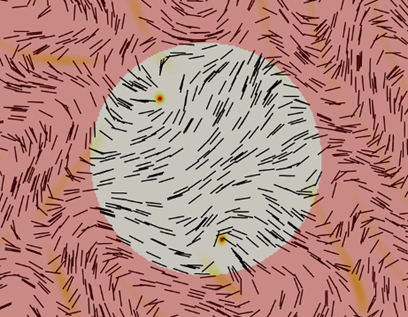Can You Make a Computer from Liquid Crystals? Yep
A University of Chicago Pritzker School of Molecular Engineering research team announced a first–designing the basic elements for logic operations using liquid crystal. The team published their findings in Science Advances. Applications won’t be forthcoming immediately but may yield new functions in sensing, computing, and robotics.
Molecules in a liquid crystal are elongated, and when packed together, they adopt an orderly structure. This structure can shift around like a liquid. One result is defects in all liquid crystals where ordered regions bump against each other, and their orientations don’t quite match, called “topological defects.” These spots move as the liquid crystal moves.
Last year, the team showed that if they controlled where they put energy into the liquid crystal by shining light only on specific areas, they could guide the defects to move in specific directions. They just took it a logical step further. They determined that it is theoretically possible to use these techniques to make a liquid crystal perform operations like a computer and are most likely to be uniquely valuable in applications such as the field of soft robotics.

